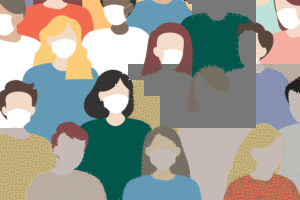It is an old trope, but true, that disasters often bring out the best in people. That, I think, is the case in the midst of a global pandemic as neighbors too harried to know one another a week ago stop to ask how they and their families are doing and what they can do to help.
But disasters can also bring out the worst; witness the current administration’s response to corona virus, a catastrophe long in the making as the entire public sector largely stitched together by FDR’s New Deal to fight the Great Depression has been starved of the funds needed to protect the public.
In that sense, the coronavirus disaster is analogous to the decades-long neglect of the nation’s physical infrastructure. Much of it was built during the 1930s not just to put millions to work but to vastly improve the physical and mental well-being of U.S. citizens. That long-range investment gave the U.S. the First World status that it subsequently forfeited as it allowed those public works — and entire cities — to fall into ruin.
Like the levees built by WPA, CCC and PWA workers along its rivers, the nation’s matrix of public health facilities and their dedicated staffs have been progressively undermined so that a long-predicted rogue disease could easily breach them, endangering the lives and livelihood of millions. As always, the poor will suffer first and most, but no one will be immune to a viral onslaught against which a collective absence of forethought provides scant defense.
Our task at the Living New Deal is to remind Americans that we do not have to live in a dystopia promoted as its opposite. We do not have to tolerate millions of our fellow citizens living in hunger, on the streets and in abject despair — tinder for the match of a new virus. We once had a federal administration that sought security for all as an enduring bulwark against fear itself. As the adjective “Living” in our name implies, the New Deal continues to embellish all of our lives. But we must first learn to see it as well as to learn the lost ethical language in which its relics are trying to speak to us of an alternate reality we once had.
In the meantime, as you shelter in place, reevaluate what you thought important just a month or even a week ago. Get to know your loved ones — but at a safe distance for a while. As you take hikes in the woods, think of the vast oxygen-producing, wildlife-sheltering forests that an international Civilian Conservation Corps could be planting to fight climate change and to promote peace among competing people just as Roosevelt dreamt his United Nations would someday do.
Listen to music, read books again, organize your long-neglected papers, and stop to pet your neighbor’s dog. Together, we will get through this, coming out the other side far greater for it.
